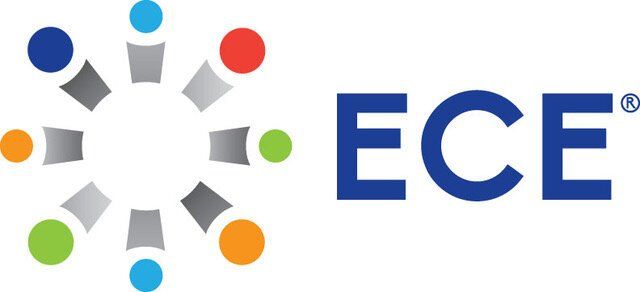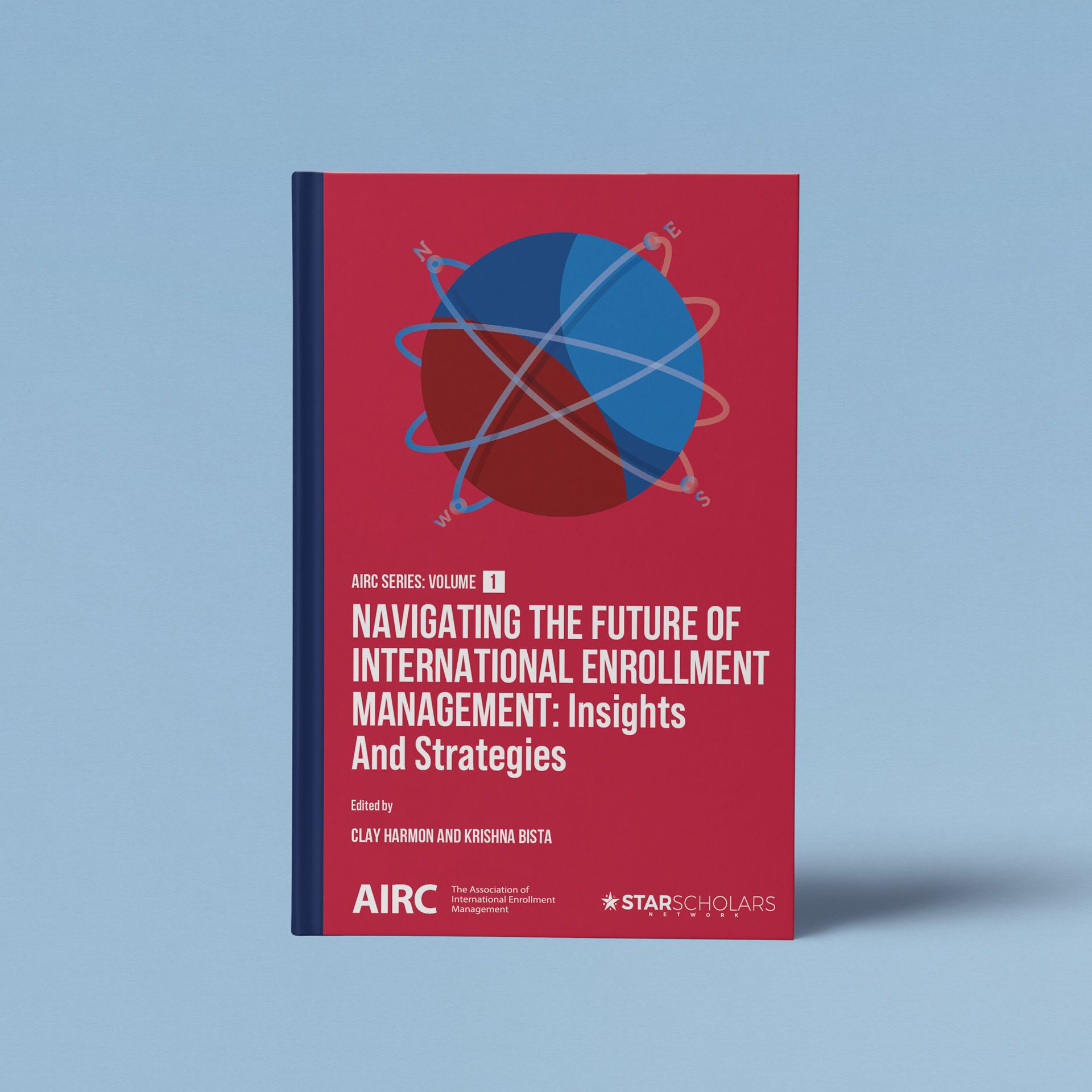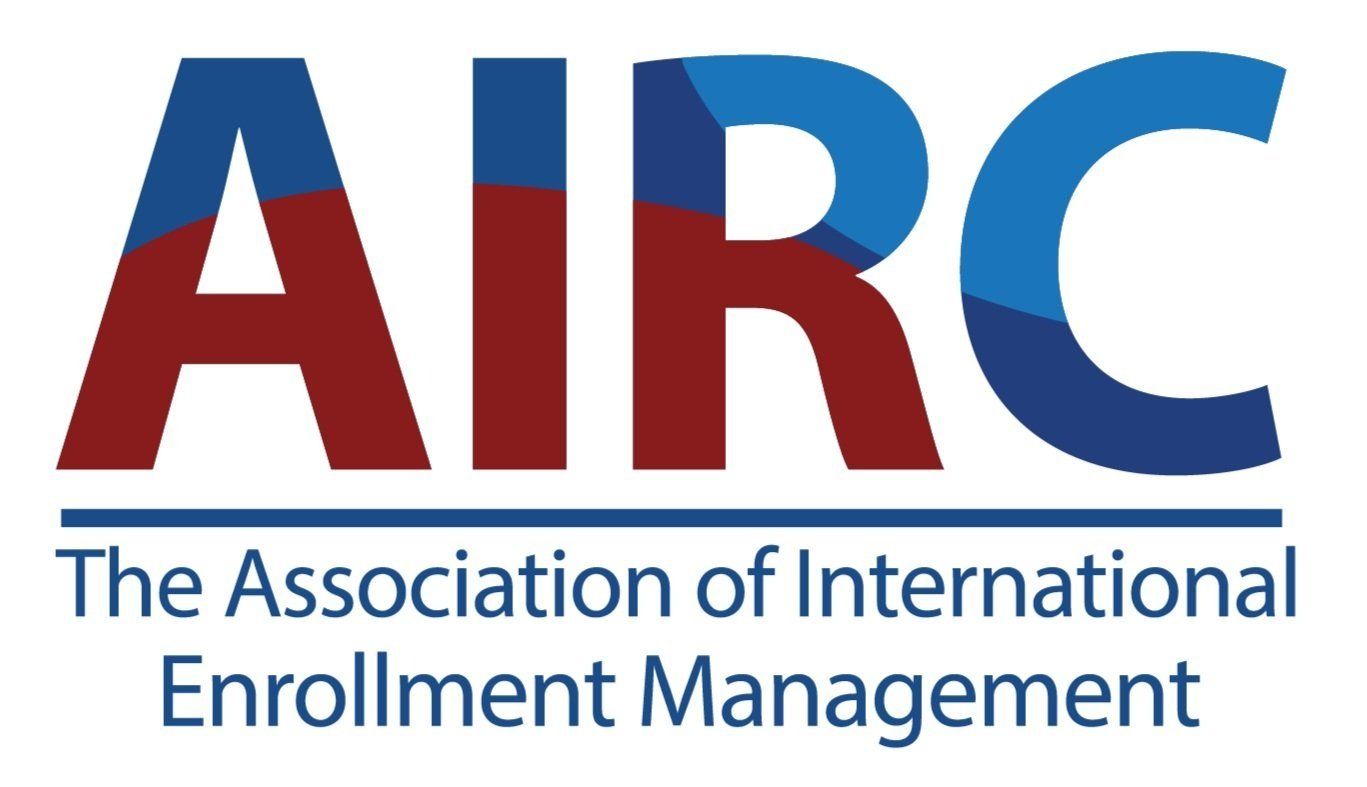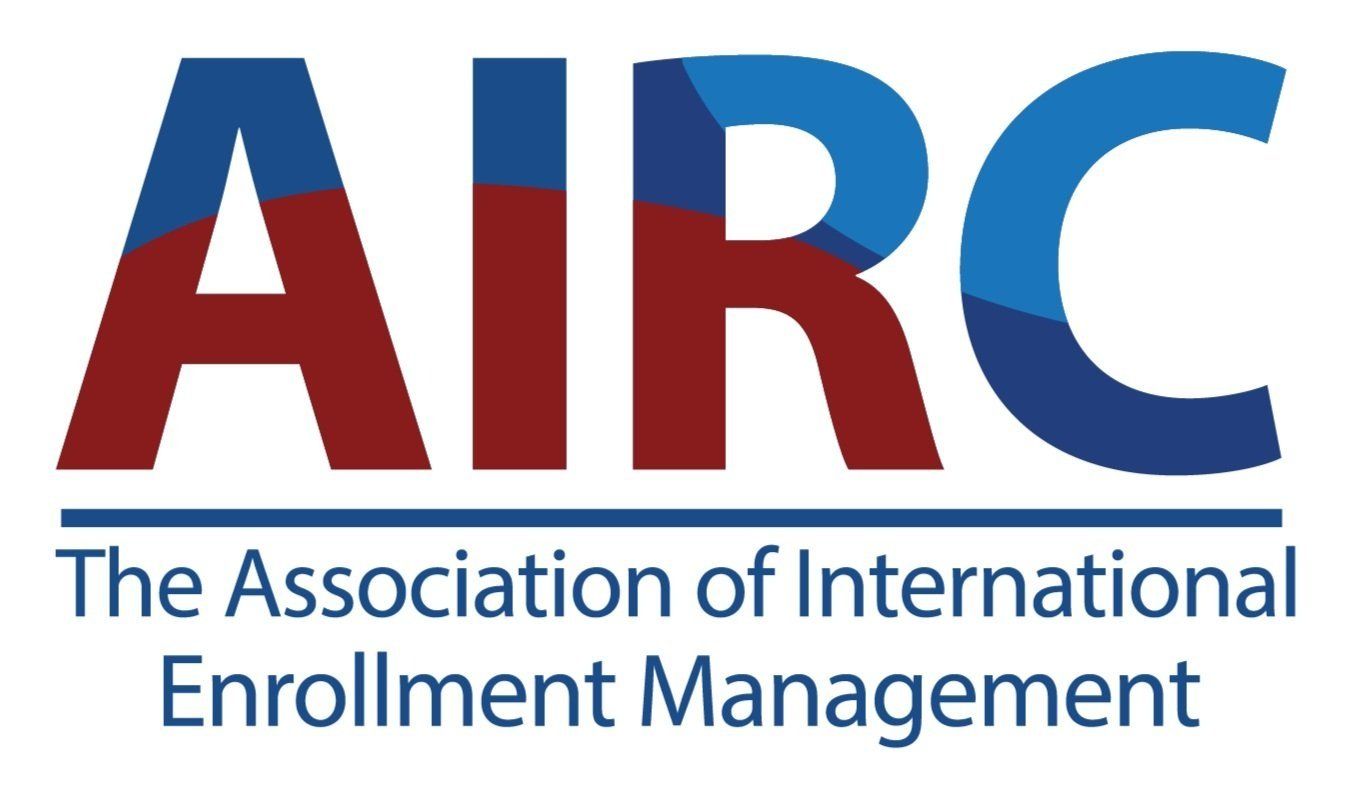From Local to Global: The Transformative Effects of International Student Recruitment on US Higher Education
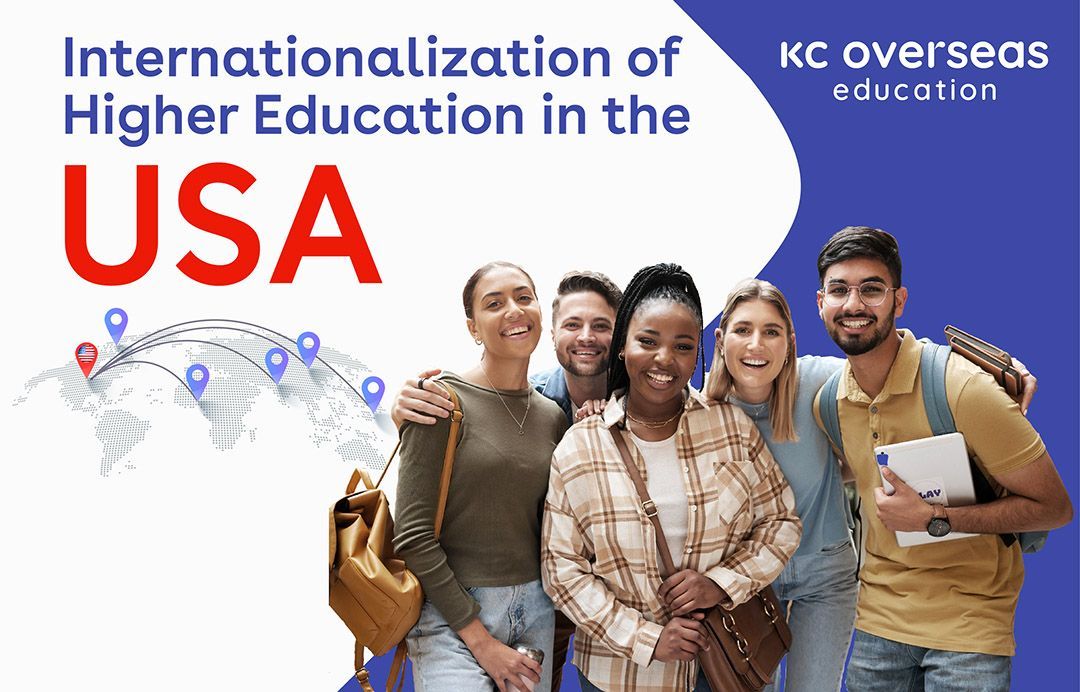
The developing global preference for studying abroad has brought a new landscape for international student recruitment. The USA is undeniably one of the most sought-after study destinations which also dominates the World University Rankings. However, over the years unprecedented and significant changes have been witnessed in the higher education enrolment curve.
Speaking of Fall 2021 domestic enrolments, the country had 15.44 million undergraduate students. It was a 21% year-over-year decline in enrolment. Additionally, postsecondary student domestic enrolment has declined by 4.9% from 2019 to 2021. This was a significant decline in higher education enrolment since the year 1951. The country’s shrinking birth rate and tuition inflation are notable factors behind falling college enrolment.
The country's ratio of domestic and international students also reflects a loop in the enrolment pattern. Moreover, with the decline in university enrolments the USA might lose its share in the global market to other countries.
Global Flow Share of the Big Four
In the domain of international education, the United States, the United Kingdom, Australia, and Canada collectively make up the "Big Four," accounting for approximately 37% of the global flow of international students. Of this quartet, the USA welcomes nearly one in five international students globally. However, global student mobility adapts swiftly in response to various regulatory developments, underscoring the need for resilience and adaptability.
Notably, over the past two decades, Australia and Canada have emerged as significant competitors in international education, with Australia experiencing a 4X increase and Canada a remarkable 9X surge in student flows. In contrast, the USA and the UK achieved a more modest 2X expansion in student flow. As a result, Australia and Canada, once smaller markets, now contribute to 33% of the Big Four's international student flows, up from 15% in 2000.
These escalating figures make it evident that the UK, Australia, and Canada are gradually chipping away at the international student share held by the USA. Without a well-coordinated campaign to regain momentum, leadership, and growth, this trend is likely to persist.
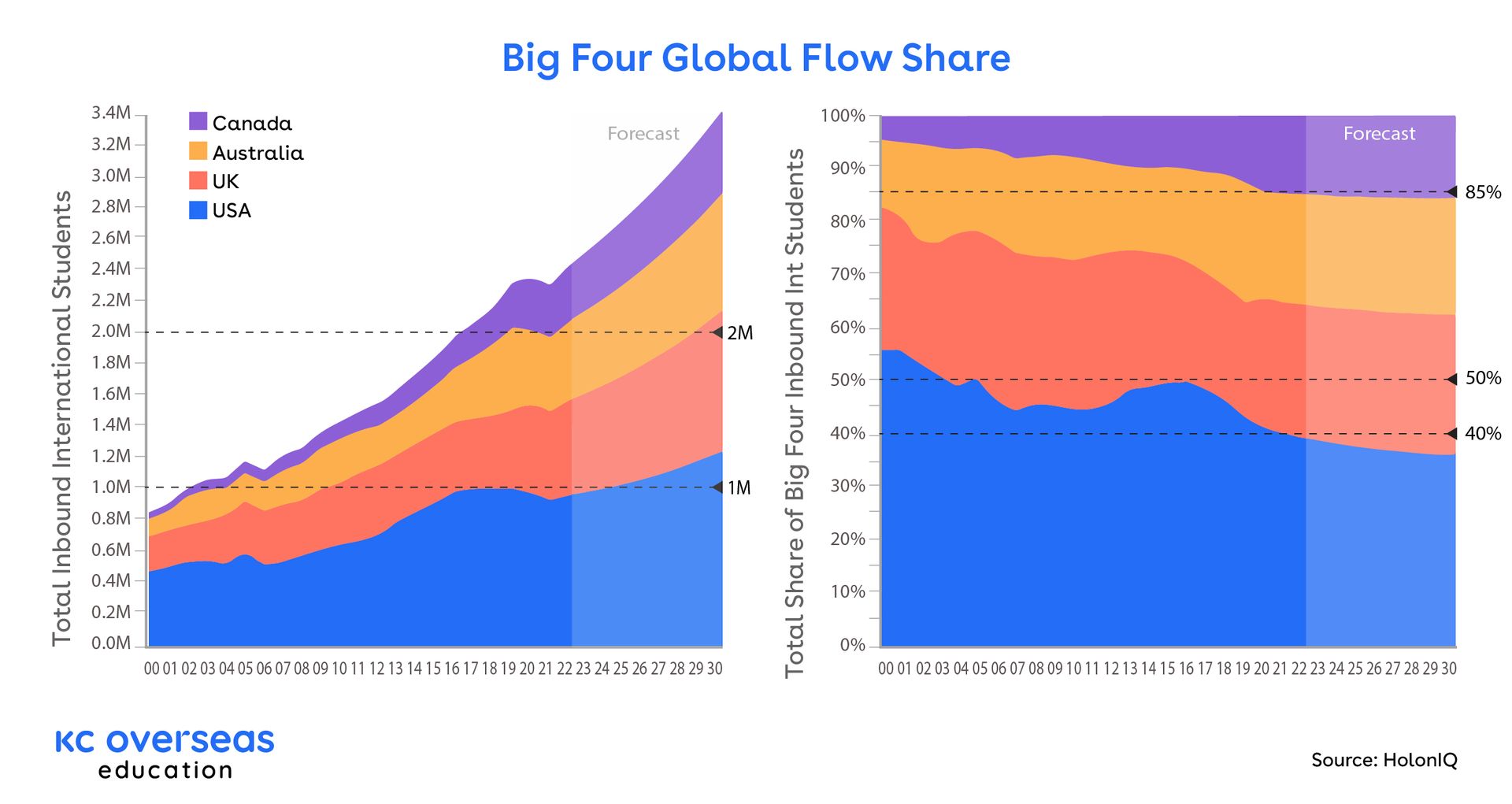
As per the above forecast, the US may outperform. However, to surpass these numbers and maintain the existing growth shown in the below graph from the year 2003 the country will have to have a clear, coordinated, and actionable internationalization plan and policies.
The solution to all these glitches can be tackled by shifting focus to the Internationalization of higher education in the USA. This blog will articulate the importance of internationalization with special emphasis on student recruitment for the interest of the universities and the nation.
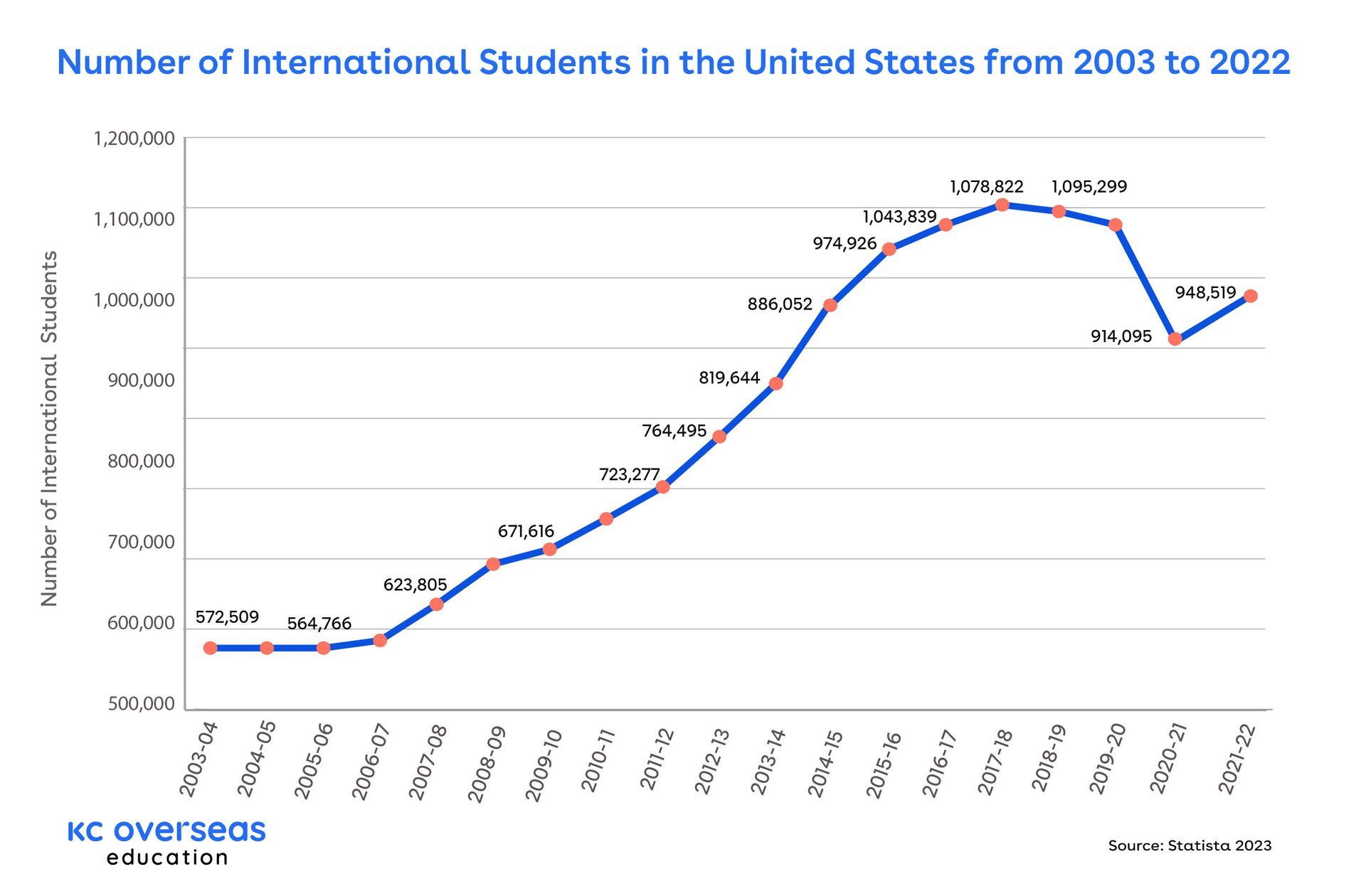
Assessing Internationalization: Why is it Essential for the US?
Assessing and analysing the contemporary state of enrolments at US colleges and universities, strategizing internationalization is an essential activity for US Universities and the Economy.
Internationalization can be meticulously worked on by increasing partnerships with institutions and organizations abroad, making the curriculum international, developing intercultural research projects, and increasing international student enrolments.
Benefits & Impacts of Advancing Internationalization
The US has more than 4,000 Institutions, and creating international policies that are regulated and standardised can have a major impact on improving student enrolment.
Throughout our analysis, we have highlighted and outlined a few notable benefits and impacts from a recruiter's point of view.
1. It can generate new revenues for the institution as well as the country.
2. Increases the number of international students studying in the USA.
3. Add diversity to the campus with student, faculty, and staff ratios.
4. Improves student's preparedness in the global era.
5. Encourages international research collaborations.
6. Contributes to the international development initiatives of the country.
To enhance the present demographic of internationalization in the USA, we have expressed a few practices to expand the cross-border flow of students.
Priority Activities and Measures to Enhance Internationalization
1. Focus on International Marketing
In internationalization, international marketing is fundamental to reaching the target audience. The US universities can focus on marketing measures to communicate the reasons to study here directly or indirectly. This can prove to be a good way to augment and showcase the university’s unique selling points and make a mark for expansion and generating leads. Universities can also announce application fee waivers and international scholarships to attract a fair number of students.
International marketing can be done on various levels like conducting events, participating in education fairs organised by local agents, participating in online webinars, etc. Developing an international marketing strategy as per the target group can yield fruitful results for the universities in the US. Digital marketing has become an economical and effective way to generate leads and reach out to a wider audience around the globe.
2. Create an International Agent Base
The study abroad recruitment industry is growing at an unprecedented rate. Millions of students aspire to pursue higher education in the US, providing opportunities for recruiters and agents to grow and flourish. These recruiters are a link between international students and universities. Agents can support scaling university applications through their network. Thus, the universities can focus on creating an international agent base that can assist students with the onboarding process to ensure a smooth transition. Finding the right agent base is vital. These agents will ensure that the students have appropriate documentation and are a suitable fit for the US University.
3. Establish Policies with a Concentrated Recruitment Focus
As per the latest HolonIQ US analysis, a list of the top 20 source countries for the United States in 2030 has been forecasted. According to the forecast, India is projected to be the number one source market for the US followed by China, Nigeria, South Korea, and Vietnam. Looking at the growth rate of these markets, establishing policies with a concentrated recruitment focus will notably enhance international student mobility from these source countries. Thereby being a profitable investment for the US universities.
4. Expand Networks to Strengthen International Positioning
While there is a substantial number of international student influx, the percentage of international students is still less in the US as compared to other leading study destinations like the UK, Canada, Australia, New Zealand, etc. By expanding the network outside universities and the country, international positioning can be strengthened.
For this, the universities can choose to spend more on creating international divisions on the campus which can support students’ needs. Additionally, they can choose to have representatives who can travel and do events to make students more aware of the universities and its programs. Hiring locally in major recruitment source countries can also help to enhance the international visibility of the university and attract more students to study in USA.
5. Increase Manpower for International Student Support
International students have various concerns when it comes to university applications and the entire process. When students do self-applications, they might feel overwhelmed with the complete process. A well-developed student support system can provide an enriching experience to the new international student. Universities can develop a more holistic structure and international office configurations to accommodate all international students' enquiries.
6. Introducing More STEM Programs
The US is globally popular for its STEM Programs. In the academic year 2020-21, 437,302 Bachelor's degrees and 146,573 Master's degrees in STEM fields were awarded. Apart from this, there were nearly 10 million workers in STEM occupations in 2021 and this total is projected to grow by almost 11% by 2031. Researchers have projected that the occupational growth of STEM will be over two times faster than the total for all occupations. Thus, introducing more STEM programs and specializations will lead to substantially more international student enrolments.
7. Developing New Policies
Most of the leading study destinations are focusing on tuition fee deposits. Similarly, the US can also make tuition fee deposits a mandatory requirement to curb the irregularities happening during student enrolment. Furthermore, they can also work on cultivating stringent policies to reduce the transfer of universities as it is leading to numerous long-term drawbacks and challenges for universities.
Following these measures will play a pivotal role in campus internationalization. Furthermore, let’s discuss the outcome of these measures in the US.
Anticipated Future of Internationalization
With the declining domestic enrolments, shifting focus on international student recruitment would not only help the US retain its spot as one of the top study destinations but also contribute to its economy and the labour market.
International student recruitment contributes massively to the US economy, statistically speaking in the academic year 2021-2022, the international students studying at US institutions contributed $33.8 billion. Additionally, they also supported 335,423 jobs in the country.
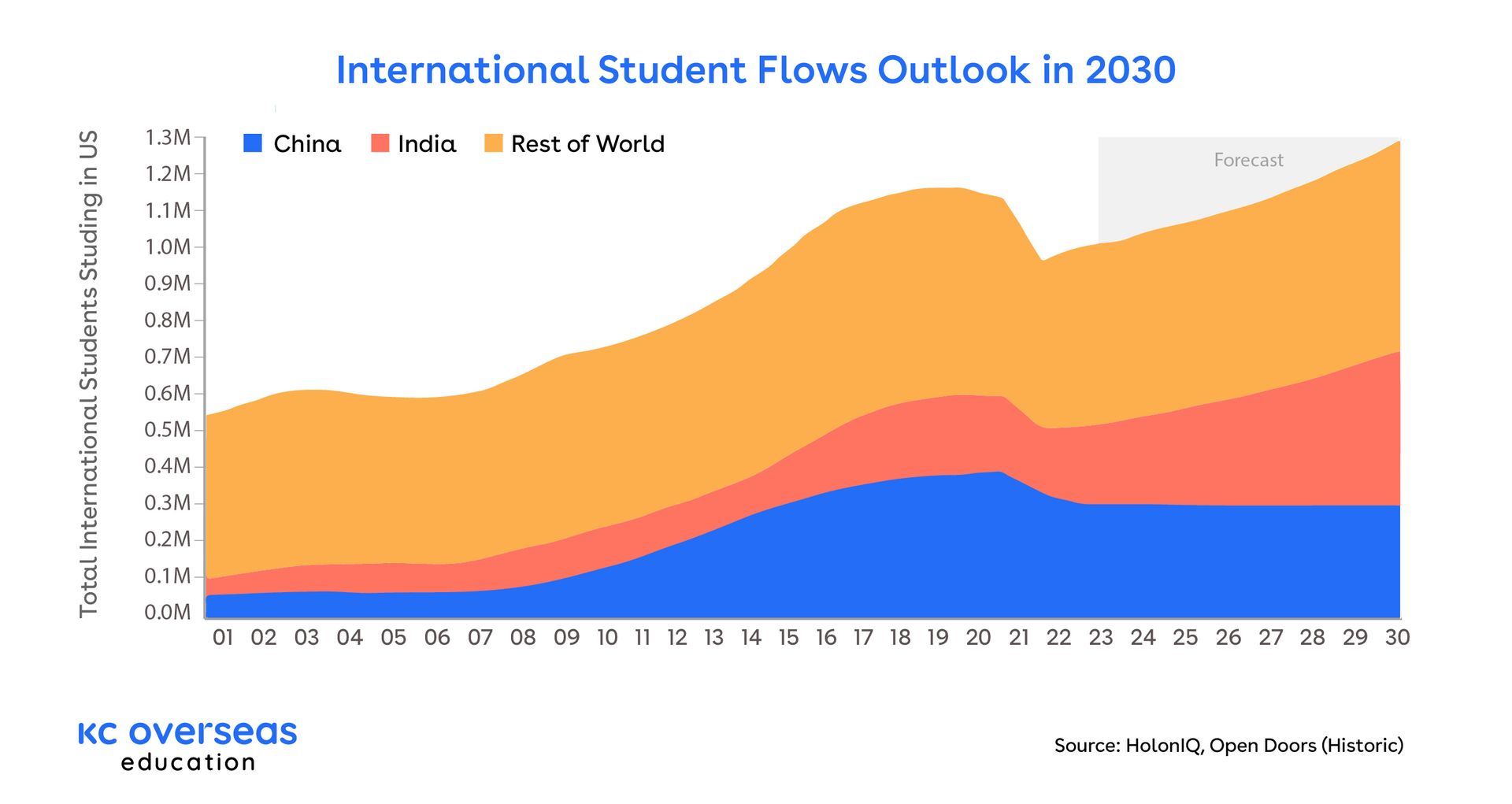
HolonIQ is predicting a major expansion of direct spending on international education. By the end of this decade, the total student spending is anticipated to be around US$433 billion. This dramatically high growth rate will demonstrate a major bounce-back for US universities.
About KC Overseas Education
KC Overseas Education is a distinguished study abroad consultancy with over two decades of experience in recruiting international students for higher education in the USA. With a front-row seat to the growing influx of international students in the USA, we share these insights to underscore the value of campus internationalization for the academic community. Through our services, we aspire to make a meaningful contribution to the further development of internationalization in the US and engage with the global student community.
In conclusion, the internationalization of higher education in the USA is not only a means of preserving its status as a top study destination but also a strategy for advancing economic growth, enriching campuses, and nurturing global preparedness.



